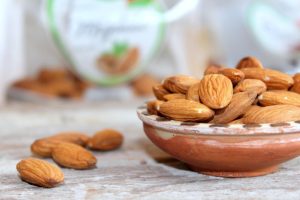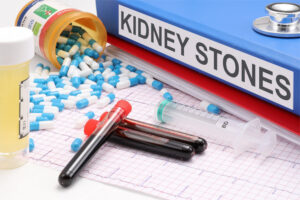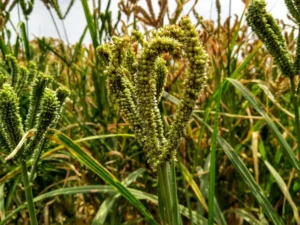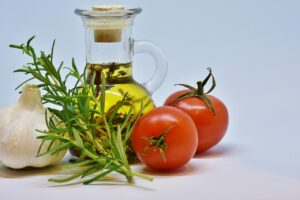On a bike ride, you’ll receive nearly as many replies as bikers in the group when you ask them what they eat and drink. It’s entirely typical for people to fuel their bikes in various ways. Nutrition and hydration for cycling are not one-size-fits-all. There are, however, a few fundamental ideas that cyclists may utilize as a springboard.
We will offer you advice for short, medium, long, and long-distance rides after covering the fundamentals.
Nutrition for Cycling: The Basics
Because every person’s nutritional needs are unique, it’s easy to get overwhelmed by the subject. If one person’s method works for them, it may not work for you. Let us focus on the fundamentals rather than an extensive list of regulations to assist. Carbohydrates, quantity, and quality are the three most essential aspects of a healthy diet.
Calories In A Day
Starting with your resting metabolic rate, you may determine how many calories you require each day (RMR). What your body burns when at rest for 24 hours is your resting metabolic rate (RMR). It’s the starting point for calculating how much energy you use each day. Over time, RMR isn’t a fixed quantity but rather a variable one. Age, sex, and lean body mass all have a role. An online calculator may help you estimate your daily calorie consumption by taking your resting metabolic rate (RMR) and degree of physical activity.
However, what about your regular workouts and other forms of exercise? Although you may make an educated guess about your everyday routine, calorie counting is a breeze when you’re riding a bike. With a power meter, you can track how many kilojoules (kJ) you burn when riding or working out. To accurately estimate the number of calories you’ll burn while cycling, convert your kJ into calories.
You can obtain a fair sense of your daily caloric requirements for cycling by putting your RMR and exercise calories together. If you want to be extra confident that you’re receiving the nourishment you need, you may keep track of your weight and how you feel.
Eat Some Carbs, But Don’t Overdo It
Most individuals can only consume roughly 1 gram per minute when consuming carbohydrates during aerobic activity. Hence the usual Cyclist Nutrition advice of 30-60 grams is based on this fact. Consuming as much as your body can handle isn’t a must all the time. A rider’s hourly kilojoule output is a better indicator of how many carbohydrates they should consume. If you’re cycling with a power meter, I suggest replenishing 20-30 percent of the kilojoules of work you’re performing every hour with carbohydrate calories consumed. For example, 500 kilojoules/hr is a decent approximate figure for a medium-sized, reasonably fit man cyclist. During rides lasting more than 90 minutes, this cyclist should try to consume between 25 and 37 grams of carbohydrate each hour. For the same rider, 40-60 grams of carbohydrate per hour may be required if they are racing or in a closed group performing 800 kilojoules of labor per hour.
Protein
Another essential macronutrient for cyclists is protein. Muscle tissue is composed mainly of proteins, and this is correct. Bone, connective tissues, skin, and hair are composed primarily of protein. Hormones, enzymes, and hemoglobin may also be synthesized using cellulose.
A daily protein intake of 0.8 grams per kilogram of body weight is generally recommended for most adults. However, endurance athletes put a lot of stress on their bodies. Consuming 1.2-1.4g per kilogram of body weight is recommended by researchers. The higher the dosage, the better, according to specific research.
Overeating Is Much Worse Than Under-Eating
When riding a bike, it’s better to be under-fed than over-fed. When you eat more than your body needs or can digest in a reasonable amount of time, your food is sitting in your stomach for an extended period. Vomiting is expected in this situation. To make things worse, the only solution is to slow down, calm down, drink water, and wait for the problem to go away altogether.
However, being somewhat hungry implies that you may quickly and easily come back to feeling terrific by consuming some carbohydrates. Fixing a modest calorie deficit takes 10 minutes and roughly 20-25 grams of carbohydrate if you’re well-hydrated.
Cycling Nutrition: What To Eat And Drink
A rider’s mood may change in a heartbeat. On certain days, you can ride for hours without becoming tired of being on your bike. It’s possible to get to the 20-mile mark on certain days and have absolutely no energy left. You can’t expect your body to function at its best if you don’t have the energy to fuel your workouts.
For the task you’re about to perform, you must provide your body with the proper nutrition. The alternative is that you’ll have to take the train home or have to hobble back on legs that feel like lead!
Distance Of 20 Kilometres
In a nutshell, your nutritional needs will depend on how far you want to cycle, how you prepare, and how you replenish afterward. Depending on their mood, the weather, and other factors, the typical road cyclist will ride at 15 to 20 miles per hour. Let’s suppose that a 20-mile bike trip takes 90 minutes, which is about right.
As long as you’ve had a healthy breakfast and a decent night’s sleep, your body will be able to keep itself well hydrated and well-fueled for an extended period. There is no need for anything more than a water bottle in this situation. Make sure to add an electrolyte pill if it’s hot outside. This will replenish the salts you’ve lost via sweating to prevent dehydration. Except for that, you’re all set to go.
More Than 50 Km Of Cycling
When you start riding longer distances, like 50 miles or more, you’ll need to know how to feed your body to keep going correctly. There are a few sites in the body where calories may be stored for later usage as energy. Our livers store part of this energy to help us get through the night when we don’t eat or drink. Muscle glycogen is mainly consumed during physical exercise and may be easily accessible for high-intensity activities. Finally, our fat reserves provide us with an ample supply of energy. The good news is that there is enough of this to go around. These fat reserves were initially intended to sustain our hunter-gatherer forefathers through the winter months when food was scarce.
You should also take into account your body’s preferences, which favours some meals over others. For the first part of your bike, eat a big piece of cake. Your blood sugar level has enjoyed the initial high it received from the rapid digestion and absorption of what you’ve just eaten but is now suffering the price of the subsequent collapse. Pizza and other fatty, oily meals are the same. You’ll feel bloated and sluggish. As a cyclist, we need to grasp the macronutrients to know how to feed a journey effectively.
Before A Ride, What And How Much Should I Eat?
Eating the right foods is essential to get the most out of your workout. Carbohydrate is the primary energy source for exercise, which is subsequently stored as glycogen in the muscles and liver. Maintaining a steady supply of carbohydrates is critical since the body can only store a certain quantity.
According to reliable sources, professional Tour de France riders’ carbohydrate requirements may range between 8 and 11 grams per kilogram of body weight (480-660g carbohydrate for a 60kg cyclist). Planned ‘grazing’ is the only way riders can satisfy their high-calorie requirements and replenish muscle glycogen. Carbohydrate demands for recreational cyclists exercising at a moderate intensity are between 5-8g of carbohydrate per kilogram of body weight per day. There must be adequate protein in the training diet for muscle repair and polyunsaturated fats to decrease muscle damage, and vitamins and minerals to help cellular development and repair.
Taking into account the length and intensity of your workouts might help you plan your fueling approach. A high-carbohydrate dinner the night before, followed by breakfast, is sufficient for fewer than three hours of a weekend ride.
Finally,
Make a note of when you’re going to resupply. There is a 90-minute window of opportunity for optimal healing, and it is instantly available to you. In this period, the body can refuel and repair itself at up to 150 percent of its standard capacity. The first step in muscle recovery is to rehydrate and then move to solid foods. This is not to imply that refueling after this time would be disastrous, but the body would be less equipped to take full use of it. Buy the best cycling nutrition products from any online site.
FAQs :
-
When should you eat before going for a bike ride?
Allow 2-4 hours before riding after a bigger meal to allow for digestion and 30 minutes to 2 hours before cycling after a smaller snack. Consider carbohydrates’ Glycaemic Index (GI): the GI of a meal indicates how rapidly it is digested and broken down into glucose.
-
Is it possible to cycle on an empty stomach?
Cycling on an empty stomach is another way to burn belly fat more efficiently and quickly. You may use the 8-hour gap between your previous meal and the start of fasting cycling as a guideline. It has the potential to produce quite excellent outcomes. However, it might be difficult and exhausting to keep going.
-
What is the ideal length of time for a beginning biker to ride?
Cycle for 30 minutes on the first day, 20 minutes on the second, and 60 minutes on the weekend to round out the week. You’re going to add one additional day of riding to the last week. On your first day, ride for 45 minutes.
Also Read : PCOS Diet Plan : Indian Diet for PCOS, Foods to Eat and Avoid


















